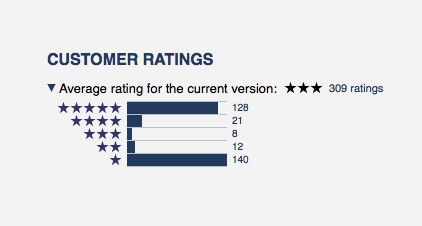If you own a business, then you’ve most likely been told (perhaps even repeatedly) that it’s important to promote and market your brand online. If you’ve been marketing your business the traditional way all this time and are doing just fine, then you may be questioning the wisdom of engaging in Internet marketing. Well, while it’s true that some businesses achieve success even without doing online marketing, it may still be a good idea to launch an digital marketing campaign. Additionally, leveraging various SERP features such as rich snippets, featured snippets, knowledge panels, and local packs can significantly enhance your online visibility and attract more potential customers to your business.
Think about it this way: If there is a chance that your business can grow even bigger than it is today, wouldn’t you take that chance? Therefore, if online marketing can make your business even more successful than it already is, why shouldn’t you engage in it? Here are some of the best reasons to do online marketing:
- It allows you to interact directly with your customers (and potential customers), especially with the growing popularity of social media.
- It allows you to become more globally competitive.
- The potential ROI is a lot higher than that of traditional marketing methods.
- It allows you to target the information you put out to specific markets and demographics.
- It enables you to extend the reach and increase awareness for your brand.
The Importance of Top Search Rankings and SERP Features for Your Business
Once you decide to engage in online marketing, one of the things you need to focus on is getting to the top of search engine results pages (SERPs), particularly on Google. As a general rule, it’s okay to land on the first page of search results, but you should always aim for the top. This is especially true because almost 60% of clicks on SERPs are done on the top three results.
You may also want to consider the fact that a top spot on Google SERPs, coupled with strategic use of SERP features, can give you about 50,000 unique site visitors each month. And for every 1,000 unique page views, you have the potential to earn $40. This means you get to earn about $2,000 a month when you rank #1 on Google! Note as well that Google earns billions in revenue in every quarter of each year. Online marketers wouldn’t spend that much money unless there’s real value in gaining top SERP results, would they?
So, how do you get to the top of SERPs? To put it simply, you’ll have to make sure your website and content are structured such that they have the best chance of getting indexed and rewarded top ranking. There are several ways for you to do this, but the best way is to always keep the needs of your target customers in mind and make SEO decisions accordingly. The content you publish should contain information that’s useful to your target audience and your website should be structured such that it is easy for your audience to navigate.

To get the number one spot on SERPs, you’ll have to make sure your website and content are structured such that you get the best chance of being rewarded top rankings.
Google SERP Features to Look Out For
You may not have noticed, but there are a few items in standard Google SERPs that increase the chances of your target audience clicking through to your site. It helps to be aware of these features so you can tailor your SEO efforts and take advantage of said features.
1. Business Name and Summary
If you have a Wikipedia page, then you’ll notice that your business name appears just beside the green URL. When a user clicks on the drop-down arrow beside the business name, he/she will see a short description of your business. The information contained in this description is similar to what you usually see in a box on the right side of the SERP when you do a Google search for popular names or brands.
Of course, we’re not saying that having a Wikipedia page is a must to succeed in online marketing, but it certainly helps extend your brand’s geographic reach and establish your credibility. This will also help you build your credibility and influence in the industry to which you belong.
2. “Cached” Dropdown
Right beside a search result’s green URL, you’ll see a small drop-down arrow. When you click on this arrow, you’ll have the option to view the cached version of the page to which the link points. The cached version is the archived version of the page that is not being pulled up in real-time.
So what if online users get the option to view the cached version of your web pages? How does that benefit your site? Well, this SERP feature may not seem like much at first glance, but it can come in handy. In the unfortunate event that your website is temporarily down, for example, or if the site visitor is having problems with his/her Internet connection, the cached version will still allow the user to view the content on the page as it was saved the last time Google’s spiders crawled and indexed it.
3. Designation as a Mobile-friendly Site
Now this is one feature you’ll be sure to love. When users conduct Google searches on a mobile device, the results will have text just before the Meta description that says, “Mobile-friendly.” It is easy to understand how this helps the performance of your site. If you were the user, wouldn’t you be more likely to click through to a site that you know will give you a good experience on your mobile device?
The value of making websites responsive or mobile-friendly has been repeatedly stressed in recent years, and it looks like there is indeed good reason for that. In a 2014 Mobile Media Consumption report by ad network InMobi, it is said that 60% of Internet access is mostly done on a mobile device. That’s more than half of total Internet use all over the world! This makes it imperative for you to ensure that your website is easy to use on mobile devices.
There are several factors Google takes into consideration when they decide whether to grant a website the “mobile-friendly” designation, but it boils down to how responsive your website is and how easy it is to use on mobile devices. If your website is Flash-based, for example, or if it does not automatically adjust its size to the smaller screen of mobile devices, then it isn’t likely to be deemed mobile-friendly.
4. Review Mark-up
If your product or brand has gotten its fair share of reviews, its ranking (stars) will be indicated just below the green URL, a significant aspect of SERP features. Let’s say, for example, that you own a chain of fast-food restaurants in San Francisco. When a user searches for “San Francisco fast food restaurants,” your rating will be shown below the URL. Naturally, the better your ratings are, the more likely the user will be to click through to your site.
It may help to get your site listed and reviewed on popular third-party review sites such as Yelp, Google Reviews/Places, and Yahoo Local Listings. It is also a good idea to allow visitors to review your product and/or brand right there on your website. If you have social media pages (as you should), don’t forget to encourage your audience to leave a review and then provide them with a link to the web page where they can post their review.
Of course, you’ll have to do your best to ensure that the reviews you get are mostly positive and that you can sustain excellent ratings. If you sell tangible products, you have to make sure product quality is always high. If you offer services, you have to make sure excellent service is maintained. And whenever you engage with your customers online, you have to make sure they always feel that you put their needs first.

Google SERPs now show customer review ratings just below the green URL.
5. Related Searches
Surely you’ve noticed that at the bottom of each results page, there’s a section with a few links to related searches, a valuable aspect of SERP features. As the name suggests, this section of the SERP points the user towards topics related to the one they are currently searching for. This increases the chance of a user clicking through to your site. If a user conducts a search but doesn’t click on your link, he/she just might click on a related search and then click on your link for that search.
This emphasizes the importance of optimizing your site for keyword sets, rather than just for individual keywords. For example, if you are targeting the keyword “fast food restaurant,” it pays to optimize for the keywords “fast food chain,” “fast food joint,” and “(name of city) fast food” as well. This way, your site gets the chance to show up on the SERP, regardless of which particular keyword the user types into Google’s search box.
By closely studying the various features of Google’s search results, you get a better idea of how a user could end up on one or more of your web pages. This insight, in turn, allows you to make the necessary adjustments to your SEO strategy so you can direct the user toward the search path that’ll lead him/her right to the doorstep of your website.




